Related Research Articles
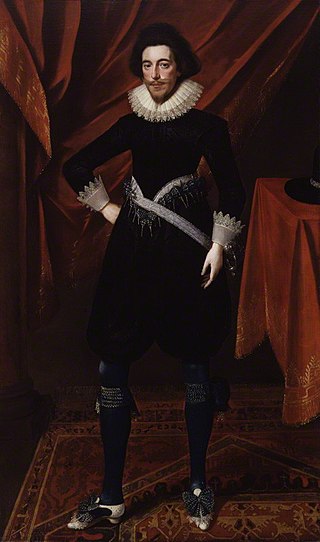
Robert Devereux, 3rd Earl of Essex, KB, PC was an English Parliamentarian and soldier during the first half of the 17th century. With the start of the Civil War in 1642, he became the first Captain-General and Chief Commander of the Parliamentarian army, also known as the Roundheads. However, he was unable and unwilling to score a decisive blow against the Royalist army of King Charles I. He was eventually overshadowed by the ascendancy of Oliver Cromwell and Thomas Fairfax, and resigned his commission in 1646.

Heworth is part of the city of York in North Yorkshire, England, about 1 mile (1.6 km) north-east of the centre. No longer in general referred to as a village, "Heworth Village" is now the name of a specific road. The name "Heworth" is Anglo-Saxon and means a "high enclosure".

Thomas Fairfax, 3rd Lord Fairfax of Cameron, also known as Sir Thomas Fairfax, was an English politician, general and Parliamentary commander-in-chief during the English Civil War. An adept and talented commander, Fairfax led Parliament to many victories, notably the crucial Battle of Naseby, becoming effectively military ruler of England, but was eventually overshadowed by his subordinate Oliver Cromwell, who was more politically adept and radical in action against Charles I. Fairfax became unhappy with Cromwell's policy and publicly refused to take part in Charles's show trial. Eventually he resigned, leaving Cromwell to control the country. Because of this, and also his honourable battlefield conduct and his active role in the Restoration of the monarchy after Cromwell's death, he was exempted from the retribution exacted on many other leaders of the revolution.

Edward Montagu, 2nd Earl of Manchester, KG, KB, FRS was an important commander of Parliamentary forces in the First English Civil War, and for a time Oliver Cromwell's superior.

Edward Hyde, 1st Earl of Clarendon, was an English statesman, lawyer, diplomat and historian who served as chief advisor to Charles I during the First English Civil War, and Lord Chancellor to Charles II from 1660 to 1667.

Ferdinando Fairfax, 2nd Lord Fairfax of Cameron was an English nobleman and politician who sat in the House of Commons at various times between 1614 and 1648. He was a commander in the Parliamentary army in the English Civil War.
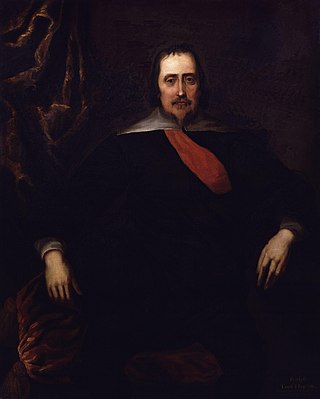
Ralph Hopton, 1st Baron Hopton was an English politician, military officer and peer. During the First English Civil War, he served as Royalist commander in the West Country, and was made Baron Hopton of Stratton in 1643.
This is a timeline of events leading up to, culminating in, and resulting from the English Civil Wars.

The First English Civil War took place in England and Wales from 1642 to 1646. It is part of the 1639 to 1653 Wars of the Three Kingdoms, which also include the Bishops' Wars, the Irish Confederate Wars, the Second English Civil War, the Anglo-Scottish war (1650–1652) and the Cromwellian conquest of Ireland. Historians calculate some 15% to 20% of all adult males in England and Wales served in the military between 1639 and 1653, while around 4% of the total population died from war-related cause, versus 2.23% in World War I. These figures illustrate the impact of the conflict on society in general, and the bitterness it engendered.
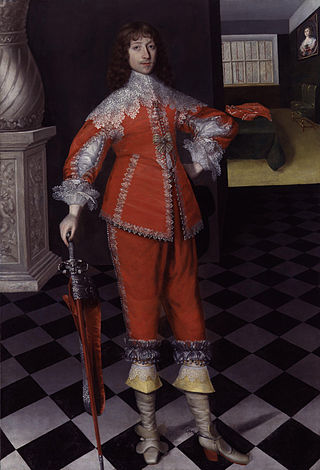
John Belasyse, 1st Baron Belasyse was an English nobleman, Royalist officer and Member of Parliament, notable for his role during and after the Civil War. He suffered a long spell of imprisonment during the Popish Plot, although he was never brought to trial. From 1671 until his death he lived in Whitton, near Twickenham in Middlesex. Samuel Pepys was impressed by his collection of paintings, which has long since disappeared.
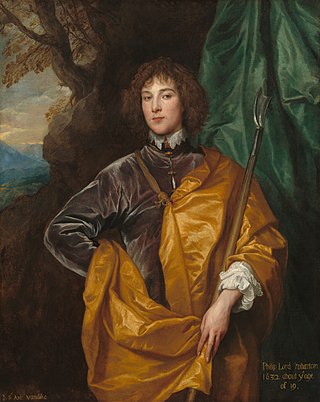
Philip Wharton, 4th Baron Wharton was an English soldier, politician and diplomat. He was a Parliamentarian during the English Civil War.
The Bunbury Agreement of December 23, 1642 was a declaration of neutrality drawn up by some prominent gentlemen of the county of Cheshire shortly after the outbreak of the First English Civil War. Like similar attempts in Lancashire and other counties, it was ignored by both Parliament and Charles I, since the strategic importance of Cheshire and the city port of Chester meant national interests overruled local ones.
The Battle of Seacroft Moor took place in Whinmoor moor near the village of Seacroft, north-east of Leeds in West Riding on 30 March 1643 during the First English Civil War. In the battle, a Parliamentarian force commanded by Lieutenant-General Thomas Fairfax was decisively beaten by a Royalist cavalry force commanded by George Goring.
The unsuccessful second siege of Hull by the Royalist Earl of Newcastle in 1643 was a victory for Parliament at the high point of the Royalist campaign in the First English Civil War. It led to the abandonment of the Earl of Newcastle's campaign in Lincolnshire and the re-establishment of Parliament's presence in Yorkshire.
The Treaty of Oxford of 1643 was an unsuccessful attempt by the Long Parliament and King Charles I to negotiate a peace treaty.
Sir John Hotham the younger, known as Captain Hotham, was an English member of parliament and military commander who fought for the Parliamentarians during the First English Civil War. He was executed for treason in 1645.
The great meeting on Heworth Moor outside York took place on 3 June 1642. Hopper (2007:1-4) provides a vivid account of the meeting and its important role in the period leading up to the civil war. The Lords and gentry of Yorkshire were summoned there by King Charles I to garner support from the county in his struggle with Parliament. At the meeting, at the request of Parliament, Lord Fairfax petitioned Charles to listen to Parliament and to discontinue the raising of troops.
Thomas Belasyse, 1st Viscount Fauconberg, styled Baron Fauconberg between 1627 and 1643 and Sir Thomas Belasyse, 2nd Baronet between 1624 and 1627, was an English politician who sat in the House of Commons at various times between 1597 and 1624 and was raised to the peerage in 1627. He was an ardent supporter of the Royalist cause in the English Civil War.

The capture of Wakefield occurred during the First English Civil War when a Parliamentarian force attacked the Royalist garrison of Wakefield, Yorkshire. The Parliamentarians were outnumbered, having around 1,500 men under the command of Sir Thomas Fairfax, compared to the 3,000 led by George Goring in Wakefield. Despite being outnumbered, Parliamentarians successfully stormed the town, taking roughly 1,400 prisoners.
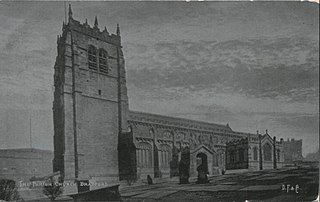
The sieges of Bradford, were two very short-lived sieges that took place separately in the town of Bradford, Yorkshire, in December 1642 and early July 1643, just after the Royalist victories in Pontefract (1642), and the Battle of Adwalton Moor (1643) respectively. In the second siege, with the Parliamentarian forces dispersed to the west in and around Halifax, the Earl of Newcastle subjected Bradford to a brief siege to enforce rule and allegiance to the king.
References
- "House of Lords Journal Volume 5: 4 October 1642", Journal of the House of Lords: volume 5: 1642-1643 (1802), pp. 385–386. URL: http://www.british-history.ac.uk/report.aspx?compid=34916 Date accessed: 27 February 2010.
- Collins, Arthur & Brydges, Egerton. Collins's peerage of England; genealogical, biographical, and historical, Volume 6, Printed for F. C. and J. Rivington, Otridge and son, 1812.
- Hyde, Edward, (Earl of Clarendon), The History of the Rebellion and Civil Wars in England: To which is Added an Historical View of the Affairs of Ireland, Clarendon press, 1826
- Farr, David. John Lambert, parliamentary soldier and Cromwellian major-general, 1619-1684 Boydell Press, 2003, ISBN 1-84383-004-3, ISBN 978-1-84383-004-7